This post may contain affiliate links. Please see our disclosure policy.
Canning blueberry juice is one of the easiest and most space-efficient ways to preserve a bumper crop of fresh summer blueberries. It captures all that deep, sweet flavor in shelf-stable jars—ready for drinking, mixing into cocktails, or using in baking and jelly making later on.
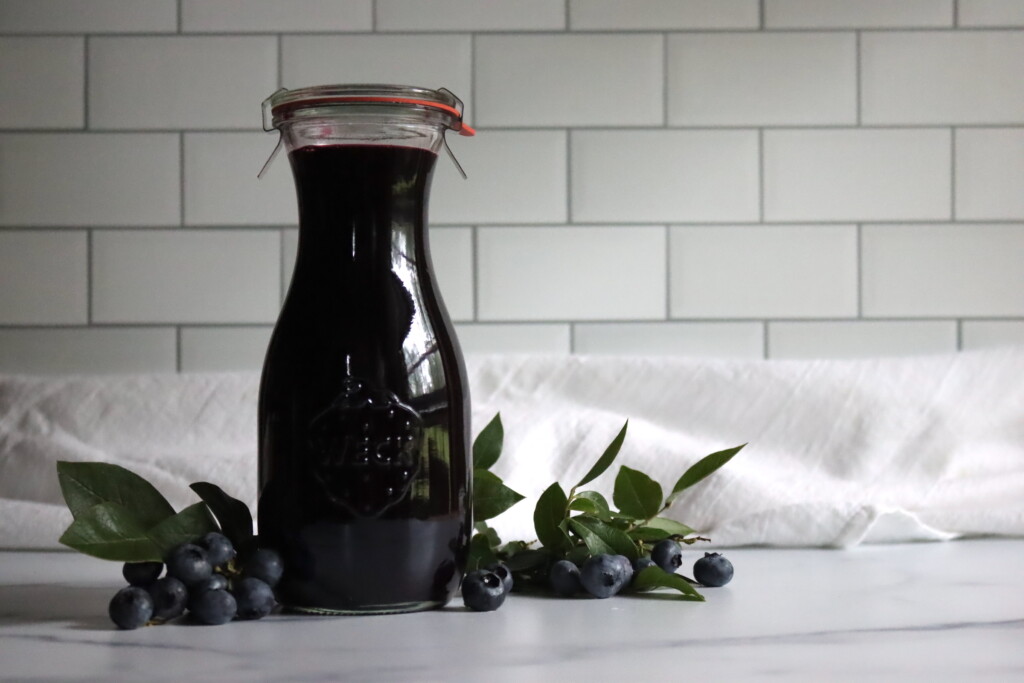
Table of Contents
When the bushes are loaded and the picking is fast, it’s easy to end up with more berries than you know what to do with. You could freeze them, sure—but freezer space is limited, and you can only fit so many gallon bags between the meat, garden veggies, and other odds and ends. That’s where canning comes in handy.
Blueberry juice takes up very little room, and it’s surprisingly quick to make. If you’re short on time in the busy summer harvest season, it’s a great way to put food by without spending all day in the kitchen.
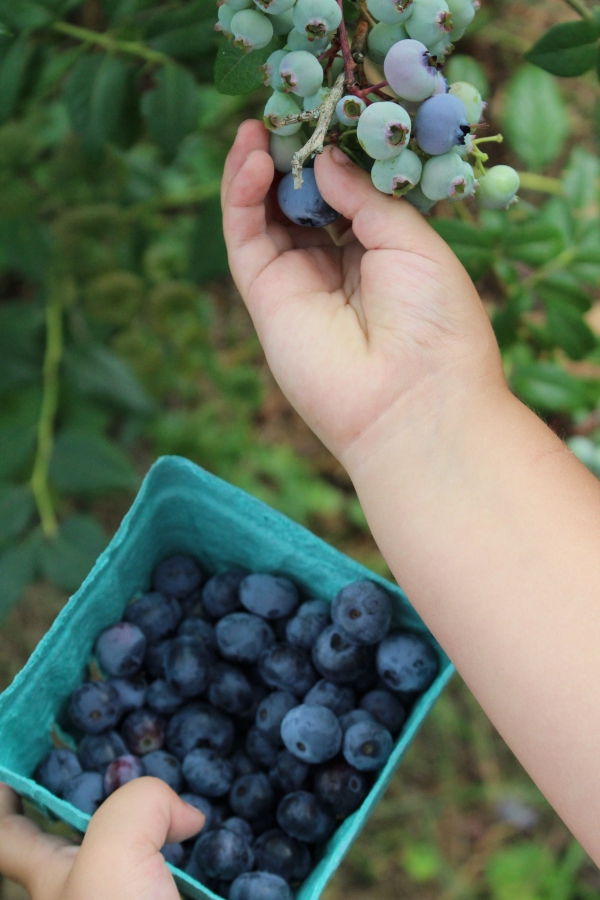
Making Blueberry Juice
There are a few different ways to extract juice from blueberries, but the method you choose depends on your equipment and how much you’re making. If you have a steam juicer, that’s the easiest and cleanest option—especially for larger batches. But if not, the stovetop method works just fine.
Start by washing your blueberries and removing any stems, leaves, or spoiled berries. Place them in a large saucepan with about ½ cup of water per quart of fruit, just enough to keep them from scorching. Simmer the berries gently for 5–10 minutes, mashing occasionally with a potato masher as they soften and release their juices.
Once the berries have fully broken down, strain the pulp through a jelly bag or a fine mesh strainer lined with damp cheesecloth. Let the juice drip through slowly—don’t squeeze if you want clear juice.
Tip: If you freeze your blueberries before juicing, the freezing process will break down cell walls and increase juice yield significantly.

How Many Blueberries Do You Need?
Blueberries are one of the more variable berries when it comes to juice yield. Expect to need 2 to 3 cups of berries to get a cup of juice, depending on the variety and how juicy they are.
If you’re using a steam juicer, you’ll generally get a better yield with less mess. For large harvests, it’s worth it.
Canning Blueberry Juice
Once your juice is extracted and strained, it’s time to preserve it. These instructions follow the tested method from The Ball Complete Book of Home Preserving, and they work beautifully for blueberry juice.
Start by heating your juice to about 190°F, but don’t let it boil. Hold it at that temperature for 5 minutes to prepare it for canning. If you’d like, you can add sugar to taste—about 1 to 2 tablespoons per cup of juice is standard, but it’s entirely optional. I tend to skip the sugar and sweeten the juice when I use it, if needed.
While the juice heats, prepare your jars, lids, and a water bath canner. The canner should be at a simmer (around 180°F) when the jars go in for hot packing.
Ladle the hot juice into jars, leaving ¼ inch of headspace. Wipe the rims, apply lids and rings, and process in a boiling water bath canner for 15 minutes for pints or quarts (or 20 minutes if you’re above 6,000 feet in elevation).
When the time is up, turn off the heat and let the jars rest in the canner for 5 minutes before removing them. This helps prevent siphoning. Let the jars cool undisturbed for 12–24 hours, then check seals. Any unsealed jars can be refrigerated and used within a few weeks.
Properly sealed jars will keep in a cool pantry for 12–18 months.
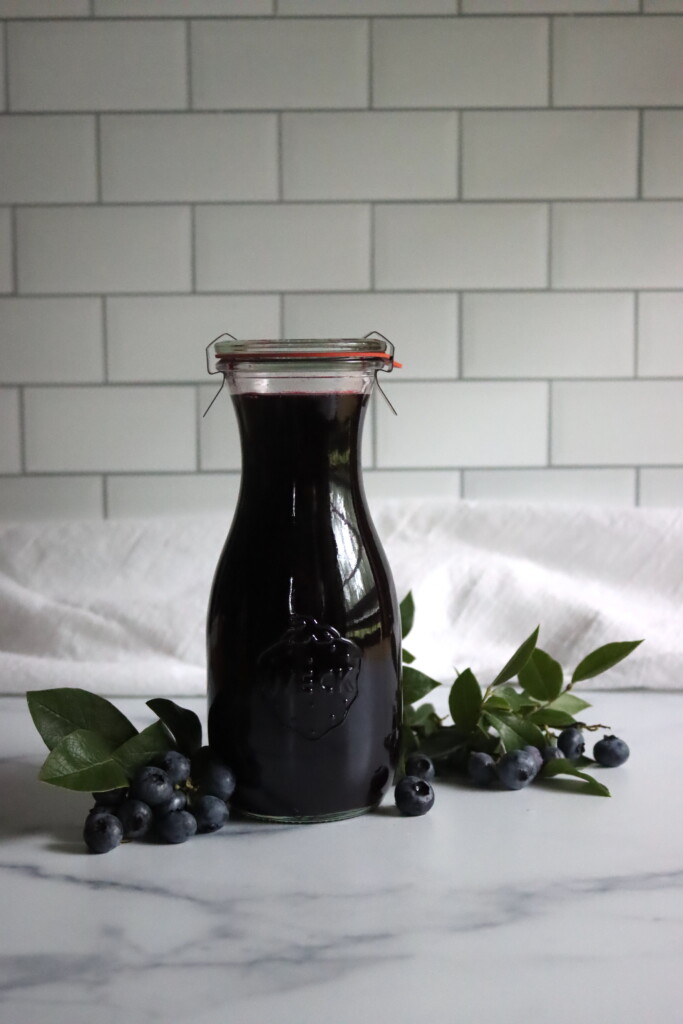
What to Do with the Blueberry Pulp?
After extracting blueberry juice, don’t toss the pulp—it still has a lot to offer. In fact, Ball Canning’s All New Book of Canning has a tested recipe for Blueberry Butter that makes use of the leftover pulp from juice-making. It’s a smart, no-waste way to get a second preserve out of the same batch of fruit.
In their method, the juice is extracted first to make Blueberry Syrup, and then the remaining pulp is measured out and cooked down with sugar and lemon juice to make a thick, rich fruit butter.

Blueberry Juice
Ingredients
- 4 cups blueberries, or up to 6 cups, see notes
- 1/2 cup water
- 2 to 4 Tbsp sugar, optional, to taste
Instructions
- Prepare the Blueberries: Rinse the blueberries and remove any stems, leaves, or spoiled fruit. Place them in a saucepan with ¼ cup water.
- Extract the Juice: Simmer the berries gently over medium heat for 5–10 minutes, mashing occasionally with a potato masher until they’ve released their juice and softened completely.
- Strain the Juice: Pour the mixture through a jelly bag or cheesecloth-lined strainer and let it drip until the juice has fully strained—about 30–60 minutes for a small batch. Do not press for clearer juice.
- Heat the Juice: Transfer the strained juice to a clean saucepan. Heat to 190°F (just below boiling) and hold for 5 minutes. Stir in sugar, if using, until fully dissolved.
- Prepare for Canning: While heating the juice, prepare a water bath canner and keep a clean pint jar hot.
- Fill the Jars: Ladle the hot juice into the jar, leaving ¼ inch headspace. Wipe the rim, apply the lid, and screw the band on finger-tight.
- Process the Jars: Place in the boiling water bath canner and process for 15 minutes (or 20 minutes above 6,000 ft elevation). These times are for half pints, pints and quarts.
- Cool and Store: Turn off the heat and let the jar rest in the canner for 5 minutes before removing. Cool undisturbed for 12–24 hours. Check the seal, label, and store.
Notes
• 1 pint juice: 4 to 6 cups berries
• 1 quart juice: 8 to 12 cups berries Sweetening: Sugar is optional. For average sweetness, use 1–2 Tbsp sugar per cup of juice. Tools: A steam juicer can improve yield and reduce mess, especially for larger batches. Storage: Properly sealed jars store well in a cool, dark pantry for up to 18 months. Refrigerate after opening.
Using Blueberry Pulp
Don’t let the blueberry pulp go to waste—there’s still plenty of flavor left even after juicing. One of the best ways to use it is to make Blueberry Butter, which makes use of the pulp after you’ve extracted the juice. To make blueberry butter, measure the leftover pulp and add ½ cup of sugar and 1 tsp of lemon juice per cup of pulp. Simmer the mixture over low heat, stirring often to prevent scorching, until thickened and spreadable. This may take 30–60 minutes depending on moisture content. Ladle the hot butter into jars, leaving ¼ inch headspace, and water bath can for 10 minutes (adjust for altitude if needed). The result is a rich, concentrated fruit spread that pairs beautifully with toast, biscuits, or yogurt—and it’s a great way to get a second delicious preserve out of the same batch of berries.Nutrition
Nutrition information is automatically calculated, so should only be used as an approximation.
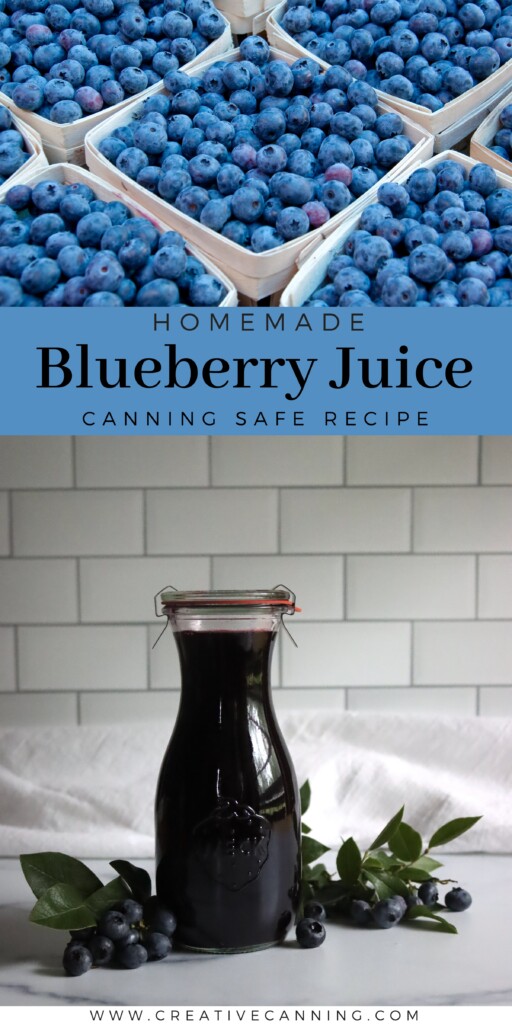
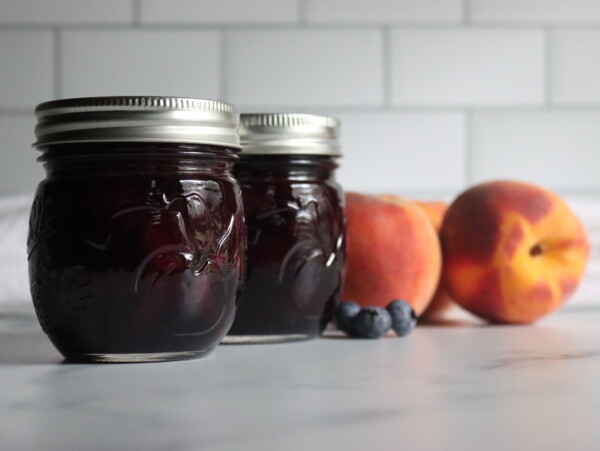
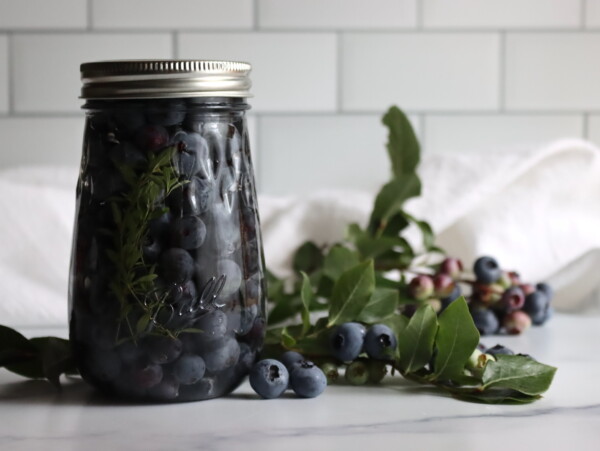
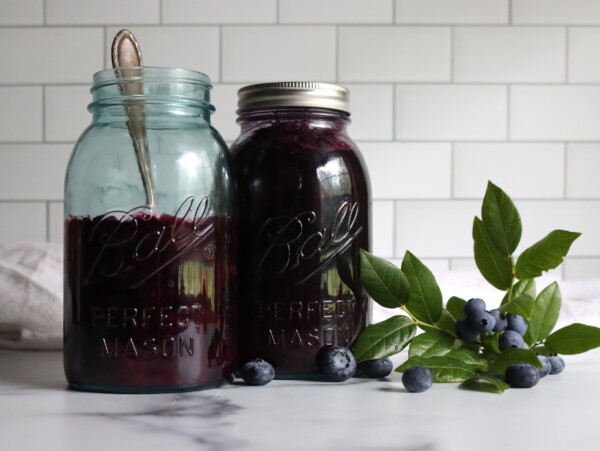
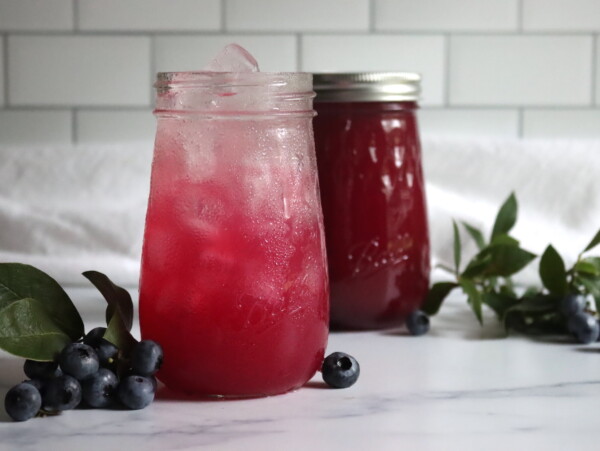
Hello, I was wondering if you can only do this recipe with blueberries or if other berries would work? For example, black currants. Or raspberries.
You can do it with just about any berry, provided they’re acidic. The only not-acidic berry I know of is Elderberries, so not those. But it works for all the other common berries (raspberries, black currants, etc). I have more information on canning berry juice in general with any type of fruit here: https://creativecanning.com/canning-berry-juice/
Your thoughts about freezer space was spot on. I want to save the blueberries for apple juice, but need to save the blueberries until fall when the apples are ready. I needed to know how much water to use when simmering. Thank you. My gramma did not have enough time to teach me everything.
So glad it’s helpful to you!